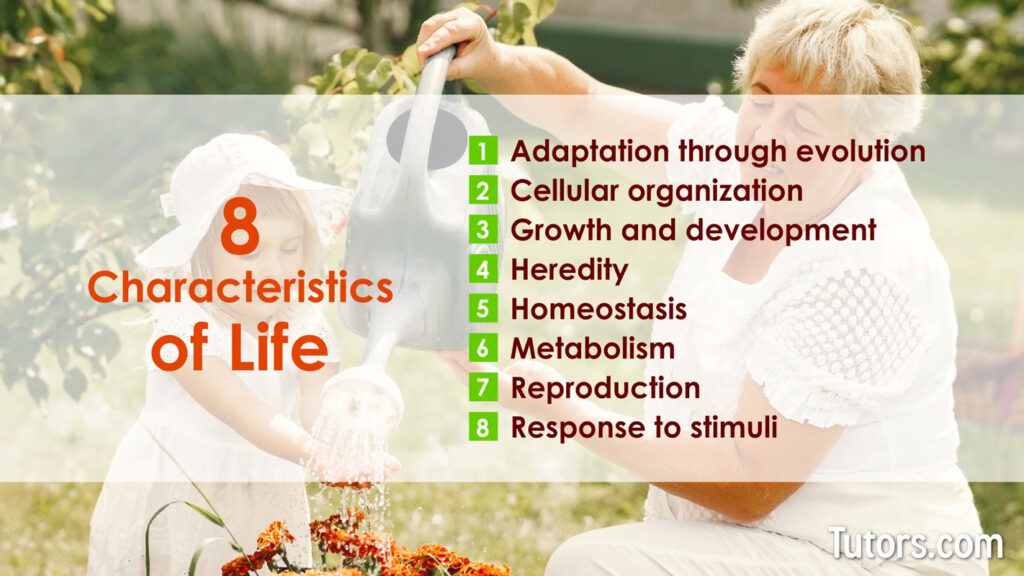Have you ever wondered what are the characteristics of life? Life comes in many shapes and sizes—from tiny bacteria to giant whales. But all living things share a set of common features. These traits help scientists tell what is alive and what is not. Once you understand them, you’ll see how every plant, animal, and microbe is connected.
Life Has a Clear Definition
Life is not just “being there.” A rock can exist for millions of years, but it doesn’t grow, eat, or respond to the world. Living things, however, carry out certain activities that keep them alive. These activities work together like gears in a machine. Miss one gear, and life can’t go on.
All Life Is Made of Cells
The cell is the smallest building block of life. Some living things, like bacteria, have only one cell. Others, like humans, have trillions of cells working together. Cells are like tiny factories—each one making energy, building materials, and repairing damage. Without cells, there is no life.
Life Needs Energy (Metabolism)
Every living thing needs energy to survive. This energy comes from different sources. Plants use sunlight in photosynthesis. Animals eat food to get energy through respiration. This whole process of using and making energy is called metabolism. Without it, organisms could not grow, move, or even stay alive.
Life Maintains Balance (Homeostasis)
Imagine if your body temperature kept changing wildly—you wouldn’t last long. Living things have systems to keep conditions stable inside, even when the outside world changes. This is called homeostasis. For example, humans sweat to cool down and shiver to warm up. Fish keep their salt levels balanced in water.
Life Grows and Develops
Every living thing changes over time. Growth means getting bigger, while development means changing form or abilities. A seed grows into a plant. A caterpillar develops into a butterfly. Growth and development show that life is moving forward, not standing still.
Life Reproduces
No living thing lives forever, but life continues through reproduction. Some organisms reproduce asexually—one parent makes an identical copy of itself. Others reproduce sexually—two parents mix their genetic material to create new life. Without reproduction, a species would disappear.
Life Responds to Its Environment
Living things notice and react to changes around them. Plants bend toward light. Animals run away from danger. Even tiny bacteria move toward food sources. This response to stimuli is an important part of survival.
Life Adapts Over Time
Over many generations, living things change to fit their environment. This is called adaptation. Polar bears have thick fur for cold weather. Cacti store water to survive in deserts. Adaptations help species survive in the long run.
Life Stores and Passes Information
All living things have DNA or RNA, which stores instructions for building and running their bodies. These instructions are passed from parents to offspring. This transfer of genetic information keeps the species going and allows changes over time.
Life Interacts with Other Life
No living thing exists alone. Plants, animals, and microbes all depend on each other. Plants give oxygen to animals. Animals give carbon dioxide to plants. Microbes help recycle nutrients. This web of connections keeps the planet’s life systems balanced.
The Grey Areas
Some things, like viruses, are tricky to classify. They have genetic material but cannot reproduce on their own. Scientists still debate whether viruses are alive. These grey areas show that defining what are the characteristics of life is not always simple.
Conclusion
So, what are the characteristics of life? Life is made of cells, needs energy, maintains balance, grows, reproduces, responds to the environment, adapts over time, stores genetic information, and interacts with others. These features connect every living thing on Earth. Understanding them not only explains what life is—it also helps scientists look for life beyond our planet.
FAQs
1. What is the simplest unit of life?
The cell is the smallest unit that can perform all life functions.
2. Do all living things need energy?
Yes, every living organism uses energy to survive and function.
3. Can something be alive without reproduction?
An individual can be sterile, but the species must reproduce to continue.
4. Are viruses alive?
Viruses have some traits of life but can’t reproduce without a host.
5. Why is adaptation important?
It helps species survive changes in their environment over generations.
Read Also : Angular Acceleration Formula: Explained Simply and Clearly

